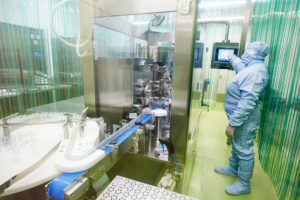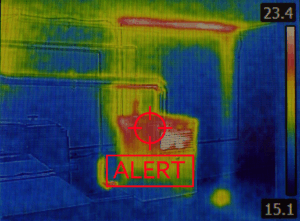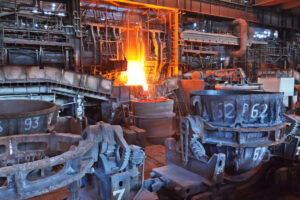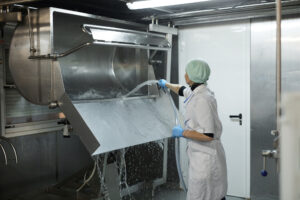When it comes to video monitoring in industrial facilities, many decision-makers fall into the trap of “all or nothing” thinking. Either they lean heavily on rugged industrial cameras or default entirely to less “durable” options.
But here’s the truth: the smartest monitoring systems use a combination of both.
Industrial environments demand more than a cookie-cutter approach to video monitoring. A hybrid system — industrial cameras where durability and precision are critical, and commercial cameras where conditions are less demanding — can optimize performance, manage costs, and improve outcomes.
Let’s break it down and find out why hybrid systems are the future of industrial video monitoring.
Industrial Cameras: The Backbone of Critical Monitoring
Industrial cameras are engineered for environments where regular cameras simply can’t survive. Think manufacturing floors, sawmills, mines, and outdoor areas exposed to unpredictable weather.
These cameras are built to handle extreme heat, cold, vibrations, dust, and moisture without skipping a frame.
Where industrial cameras shine:
- Harsh Environments: In areas prone to heavy vibrations, extreme temperatures, or corrosive chemicals, rugged industrial cameras are the only viable option. Their durability ensures consistent operation without costly downtime or replacements.
- Precision Monitoring: Whether inspecting high-speed assembly lines or monitoring critical machinery, industrial cameras offer superior imaging and custom configurations to capture exactly what’s needed.
Learn more about ruggedized cameras and their advantages here.
The Role of Commercial Cameras in a Hybrid System
While industrial cameras are indispensable in tough conditions, not every corner of an industrial facility requires such heavy-duty equipment.
Commercial-grade cameras can be excellent for less demanding areas, such as administrative offices, warehouses, employee break rooms, or outdoor surveillance where environmental challenges are minimal.
Why commercial cameras make sense in industrial settings:
- Cost-effectiveness: Commercial cameras are generally more affordable than industrial models, making them ideal for non-critical areas.
- Choice of Features: When durability isn’t a concern, commercial cameras can offer variety like lenses, housing, controls, and more.
- Flexibility: With their compact designs and wide range of features, commercial cameras can address secondary monitoring needs without overburdening your budget.
Why Hybrid Systems Are the Smartest Choice
The beauty of a hybrid video monitoring system lies in its ability to balance functionality, durability, and cost. By deploying the right camera for the right job, facilities can optimize their security and operational monitoring without unnecessary expenses.
Key Benefits of a Hybrid System:
- Targeted Performance: Industrial cameras are placed in areas where resilience and precision are non-negotiable, while commercial cameras cover less intense areas. The result? No over-engineering and no under-performance.
- Cost Optimization: Why spend premium dollars on industrial-grade equipment to monitor a lobby or warehouse? A hybrid system ensures you invest where it matters most and save where you can.
- Scalability: Hybrid systems can grow with your facility’s needs, allowing you to add or upgrade cameras as operations evolve.
- Enhanced Redundancy: By combining different camera types, you build layers of protection against system failures. If one camera type falters, another can often provide overlapping coverage.
For insights into choosing the right industrial camera system, check out this detailed guide.
How to Implement a Hybrid System in Your Industrial Environment
Making the shift to a hybrid video monitoring system isn’t as complicated as it sounds. Here’s how to get started:
- Assess Your Facility’s Needs: Identify the zones where conditions are harsh or require high-precision monitoring. These are your prime candidates for industrial cameras. Areas with minimal challenges can rely on commercial models.
- Consult With Experts: Work with a partner like Opticom to evaluate the best combination of cameras for your specific environment. Our expertise can help you avoid common pitfalls like over-purchasing or misplacing equipment.
- Prioritize Integration: Ensure the cameras — both industrial and commercial — can integrate seamlessly into a unified video monitoring system for easier management and better data sharing.
- Plan for Maintenance: Even the best cameras require upkeep. Develop a schedule for regular inspections and cleaning, especially in high-dust or corrosive environments.
- Test Before Full Deployment: Start with a pilot program in a small section of your facility. Evaluate performance and adjust the setup as needed before scaling up.
Real-World Example: A Hybrid Video Monitoring System in Action
Consider a manufacturing plant with both high-risk production zones and general administrative areas.
- In the production zones, Opticom’s ruggedized cameras handle the heat, dust, and vibrations, capturing precise footage to monitor machinery and ensure safety compliance.
- In the yard, guard shacks, hallways, and for general viewing, our commercial cameras provide affordable, reliable video monitoring to track employee and product movement and maintain security.
The result? A seamless, cost-efficient system that addresses every need without overspending.
Final Thoughts
Smarter video monitoring isn’t about choosing industrial or commercial cameras — it’s about using both in harmony. A hybrid system ensures every corner of your facility is covered efficiently, reliably, and without waste.
If you’re ready to take your monitoring system to the next level, Opticom can guide you through every step, from assessing your needs to deploying the perfect hybrid setup.
Don’t settle for one-size-fits-all video monitoring. Opt for smarter monitoring that works where you need it most. Schedule a free call.







